A solar eclipse hits totality in Mexico, plunging the city of Mazatlan into darkness as a rare cosmic phenomenon spreads across the Americas
The solar eclipse has reached totality for the first time, as the moon completely blocks the sun in Mexico and continues toward the United States.
The Mexican resort town of Mazatlan was the first major viewing spot to be plunged into darkness by this celestial phenomenon.
The total solar eclipse became visible around 11:07 a.m. MT and was present for 4 minutes and 17 seconds, according to NASA.
Thousands of people gathered along the seaside promenade and took their seats in sun loungers wearing eclipse glasses as an orchestra played the ‘Star Wars’ theme.
In Kerrville, Texas, the first partial solar eclipse became visible in the United States around 12:59 PM CT and is said to become a total solar eclipse around 1:32 PM CT.
MAZATLAN, MEXICO: The solar eclipse has reached totality for the first time
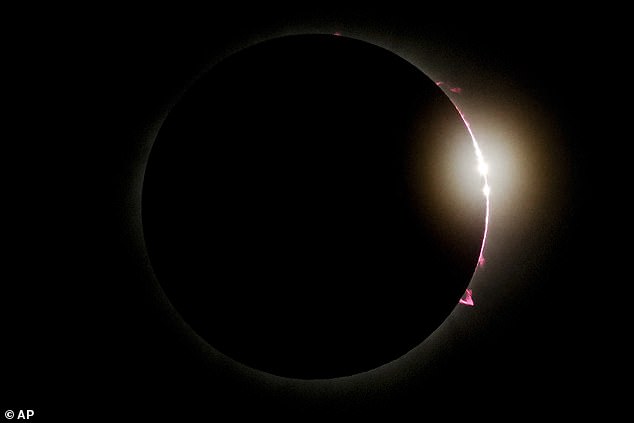
MAZATLAN, MEXICO: The moon covered the sun for 4 minutes and 17 seconds
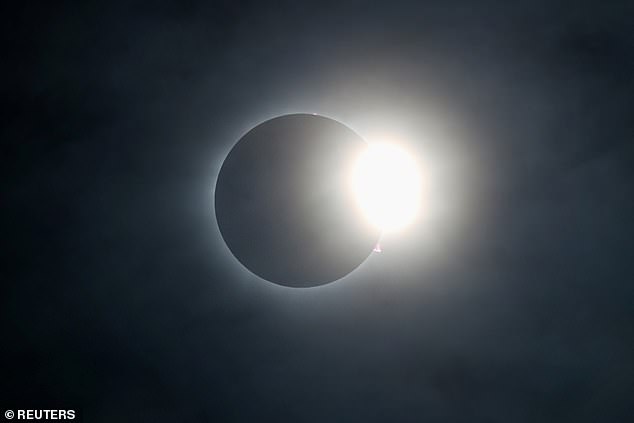
MAZATLAN, MEXICO: The Mexican resort town of Mazatlan was the first major viewing spot to be plunged into darkness
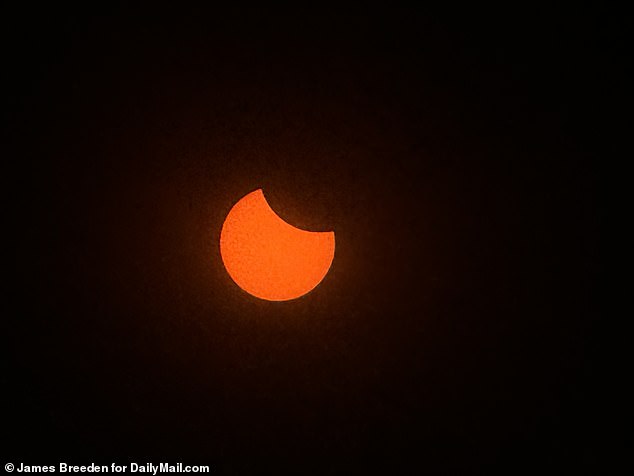
DALLAS, TEXAS: Partial solar eclipse visible from the Dallas Zoo
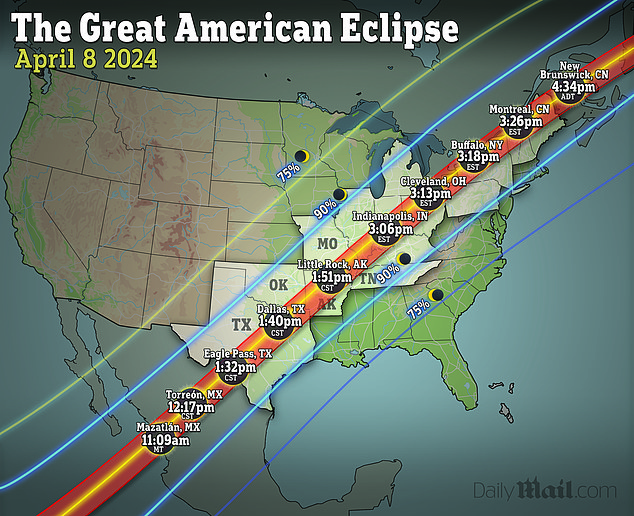
A total solar eclipse will move across North America and be visible for up to four minutes
Thousands have packed cities along the total solar eclipse’s “path of totality,” where the moon will completely block out the sun, starting in Mexico and passing through Texas, where the moon will travel to New England and end in Canada.
At each location along the path of totality, people will see a partial solar eclipse, followed by the total solar eclipse, and then another partial solar eclipse.
Although the newly announced forecasts for Monday are ominous, pointing to thunderstorms and cloud cover that could limit visibility, thrill seekers with deep pockets are not discouraged.
ECLIPSE TIMELINE
The Lone Star State will be the first state to see the heavenly event around 1:27 PM ET, then Oklahoma is next around 1:45 PM CT, followed by Arkansas at 1:51 PM ET and Missouri about five minutes later.
Illinois is next in line on the path of totality, with Carbondale experiencing the solar eclipse around 1:59 PM CT and Paducah, Kentucky about a minute later.
And Evansville, Indiana at 2:02 CT and then Ohio is expected to witness it around 3:13 ET.
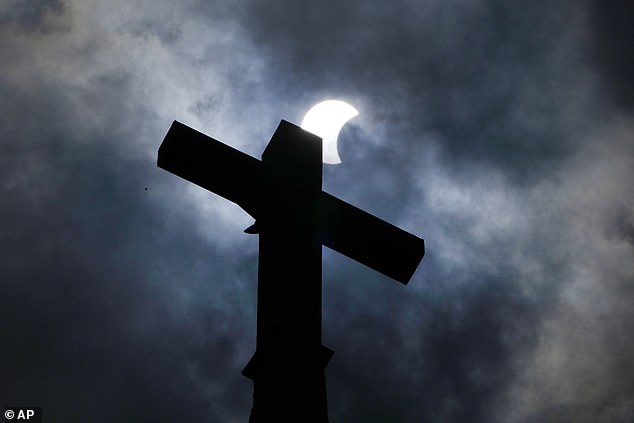
MANOR, TEXAS: Clouds part as a partial solar eclipse passes over a church
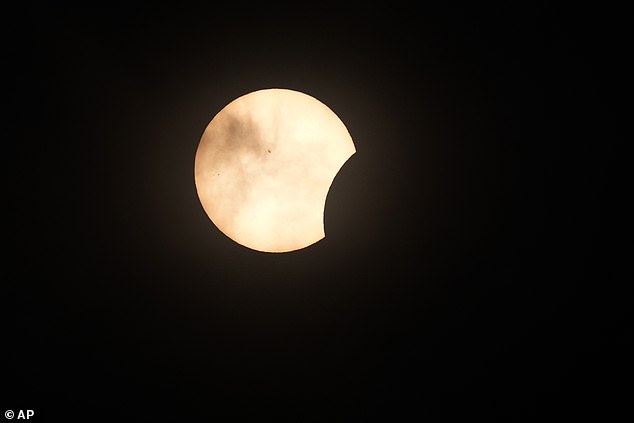
FORT WORTH, TEXAS: The solar eclipse moves through Texas
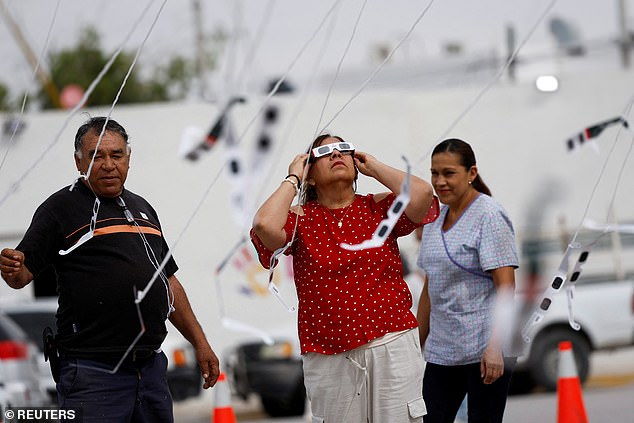
A woman uses special goggles to observe the solar eclipse in Torreon, Mexico
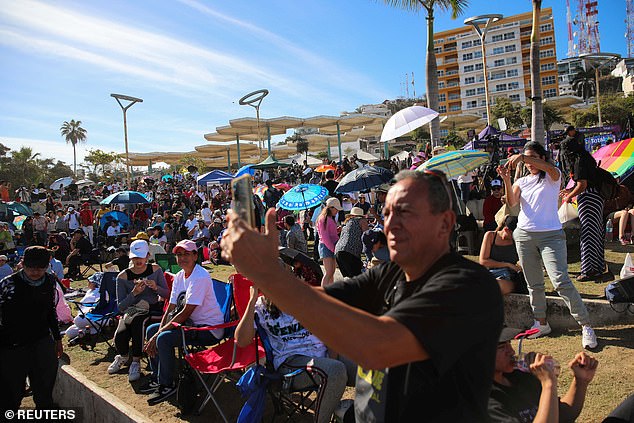
People gather and wait to observe a total solar eclipse in Mazatlan, Mexico
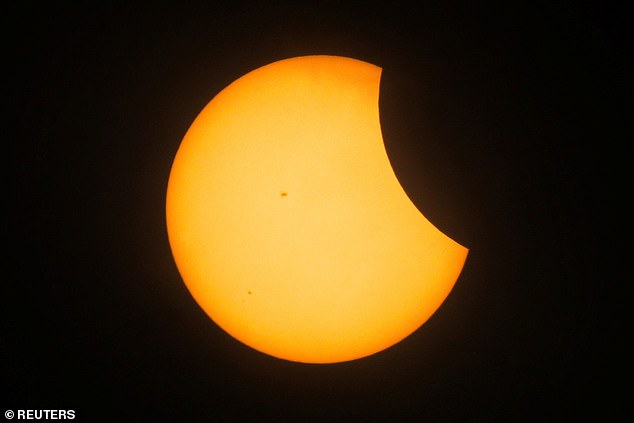
MAZATLAN, MEXICO: A partial solar eclipse can be seen in Mexico as it follows the path of totality
State officials estimate that up to 556,000 people will visit the Buckeye State.
Erie, Pennsylvania is next, with the eclipse set for 3:16 PM ET, followed by Buffalo, New York around 3:18 PM ET.
The path continues north, reaching Burlington, Vermont at 3:26 PM ET, Lancaster, New Hampshire at 3:27 PM ET, and Caribou, Maine at 3:32 PM ET.
WEATHER FORECAST
Tourists who traveled thousands of miles to catch a glimpse of the solar eclipse in Dallas — which was meant to provide the best views — are racing elsewhere as storm clouds gather over the Lone Star State.
Although Texas has one of the best geographical positions to observe this unique celestial event, clouds began moving in around 9 a.m. local time as severe storms are expected Monday evening.
Forecasters in Forth Worth explained that morning clouds would begin to break around noon, allowing many to enjoy the spectacle in the sky.
The National Weather Service predicts that northern New England will be the best location for a clear view of the total solar eclipse Monday afternoon.
Forecasters said South Texas will have an increase in cloud cover ahead of the eclipse’s arrival.
Other locations in between are said to have a fair chance of cloud cover at varying levels, although locations from Arkansas to the Midwest could see breaks in the clouds or high thin clouds during the time of totality.
NASA’s Eclipse Soundscapes Project will deploy thousands of volunteers from across the US to collect data on Monday’s celestial sensation.
Nearly 2,500 people signed up to complete written multisensory reports on animal behavior and human responses during the event.
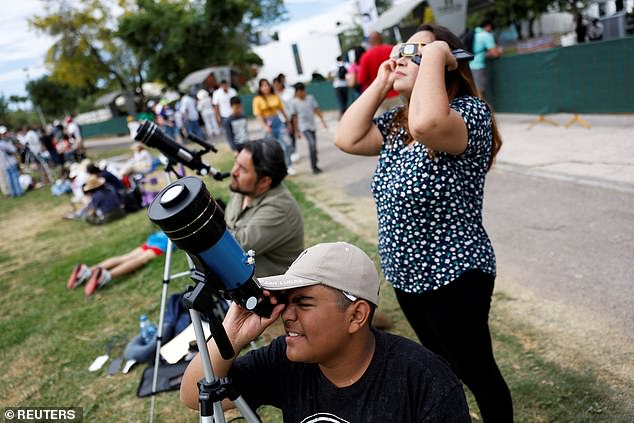
People gather as they prepare to observe the beginning of the solar eclipse in Torreon, Mexico

ARLINGTON, TEXAS: The beginning stages of a total solar eclipse are visible
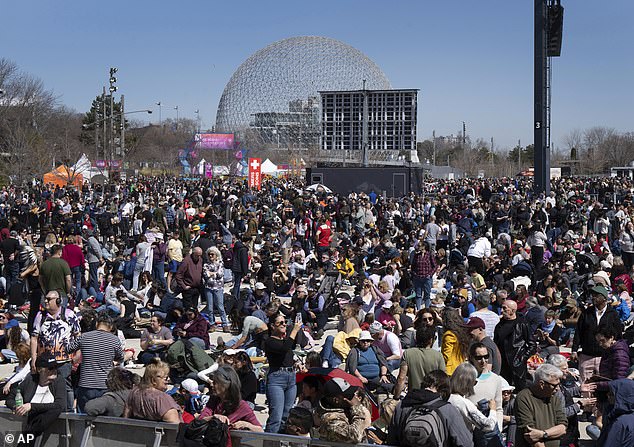
People gather to watch the total solar eclipse at Parc Jean Drapeau, in Montreal

KERRVILLE, TEXAS: A partial solar eclipse can be seen across the United States in Texas
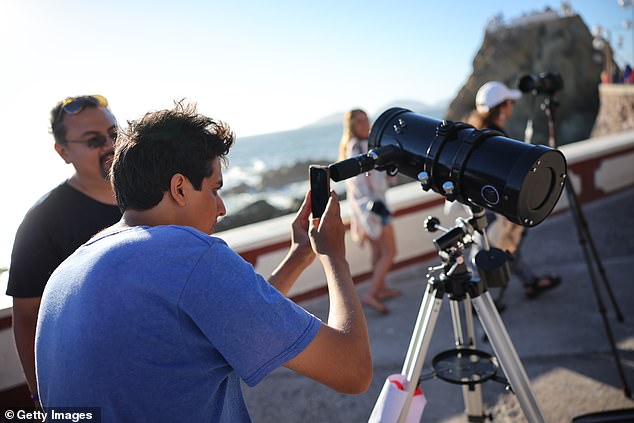
Some major cities and their metropolitan areas were within or near the path of totality, including Mazatlan and Torreon in Mexico
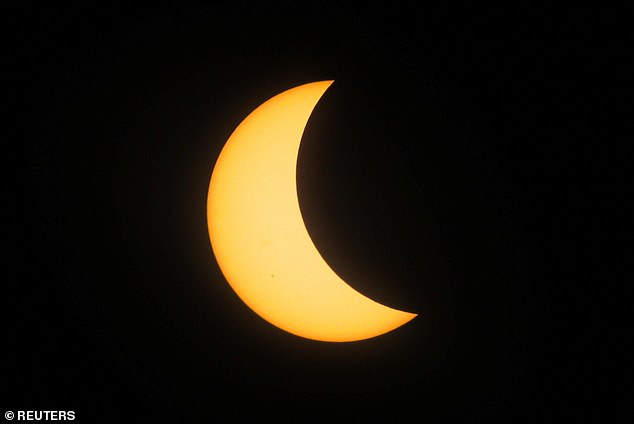
MAZATLAN, MEXICO: A solar eclipse begins to block out the sun
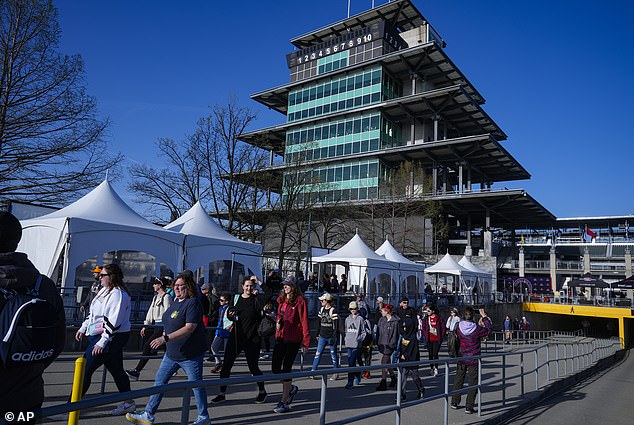
Visit Indy Senior Director of Public Relations Morgan Snyder told FOX Weather they expect up to 125,000 visitors in Indianapolis to view the eclipse
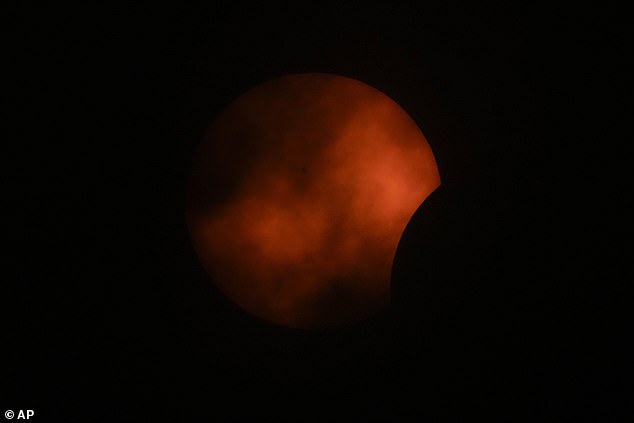
ARLINGTON, TEXAS: Clouds move through the atmosphere limiting visibility of the partial total solar eclipse
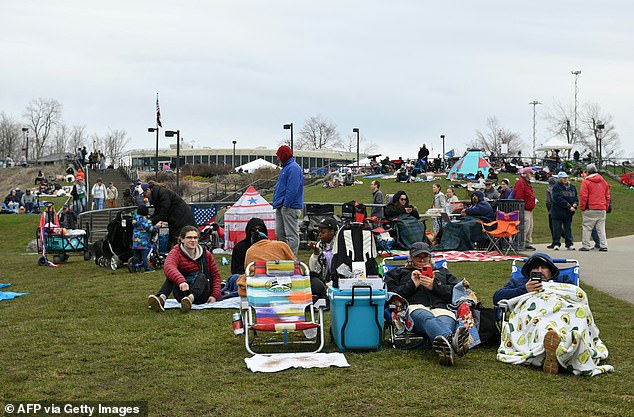
Millions of spectators have gathered in the United States, Canada and Mexico to watch the spectacle of a total solar eclipse
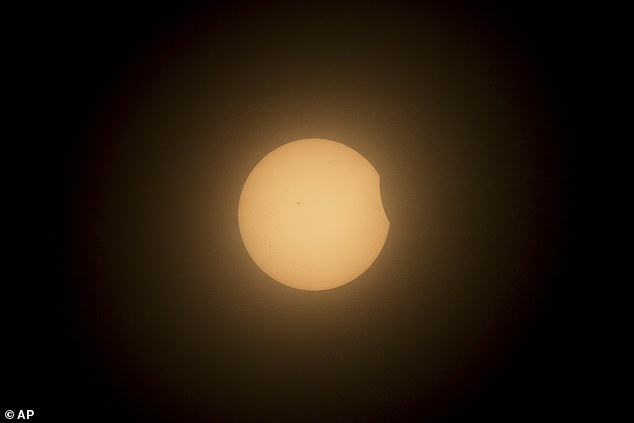
MAZATLAN, MEXICO: The moon partially covers the sun during a total solar eclipse
PHOTOGRAPHY
In Niagara Falls, photographers lined up early in the morning to find the best spot to take photos of the eclipse.
Astrophotographer Stan Honda told it CNN Photographers of all skill levels can take photos of the solar eclipse, as long as they have a sturdy, stable tripod and a remote shutter release for your camera.
“You can get a good view of the eclipse with almost any camera or lens,” he said. ‘I would only recommend a reasonably sturdy tripod so that your setup is quite stable, and a remote shutter release as that will allow you to take the photos without shaking or moving the camera too much.’
“A safe solar filter is really a necessity for the partial phases, and the American Astronomical Society has a whole section on its website about eclipse glasses and filters that they consider safe to use.”
